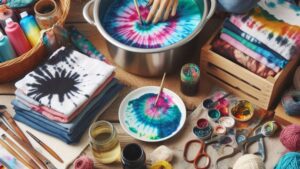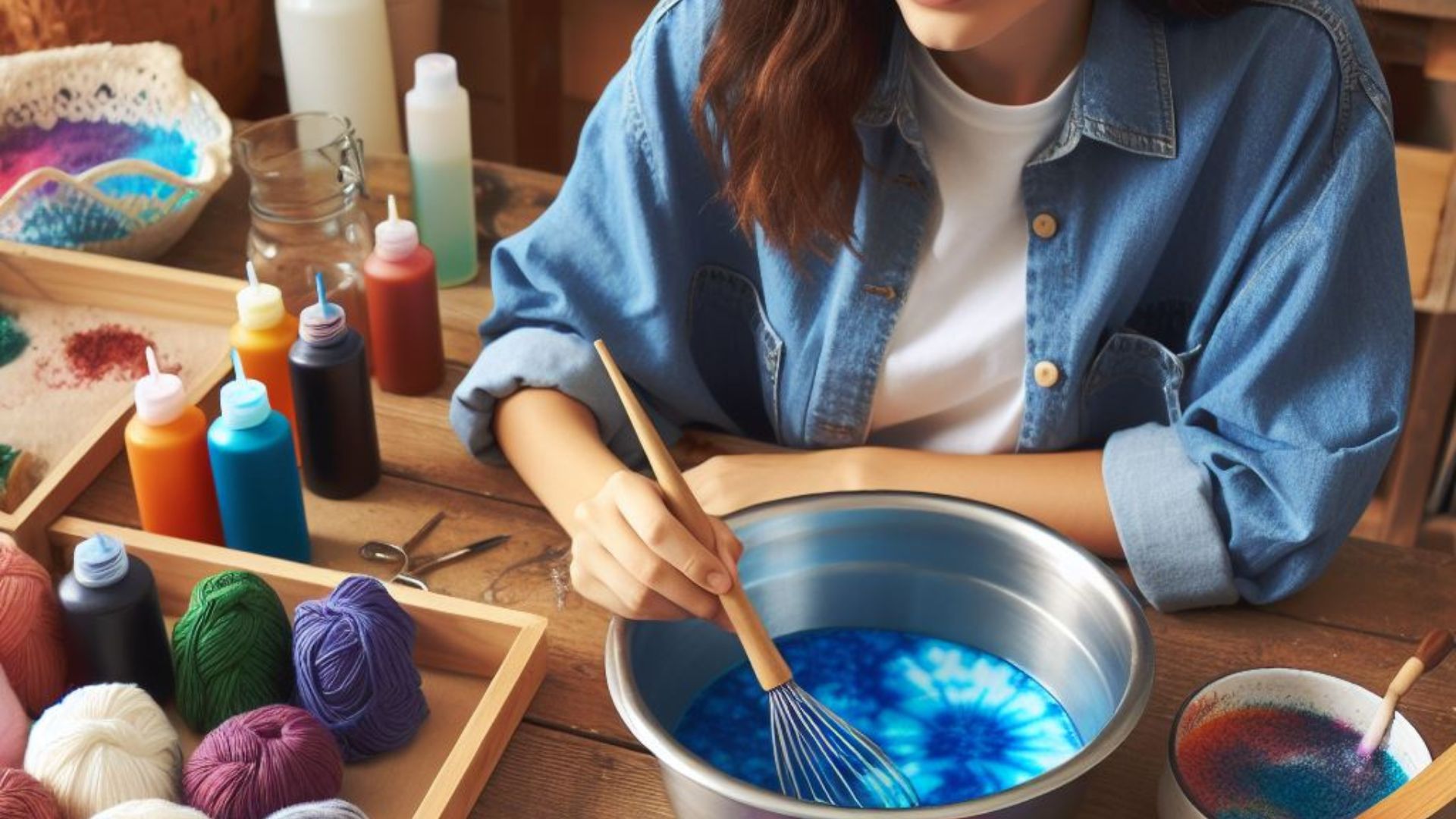Dyeing fabrics or materials can be a creative and rewarding process, but it’s essential to consider the expiration date of the dye you’re using. The expiration date isn’t just a formality; it can impact the effectiveness of the dye and, subsequently, the final outcome of your project.
Understanding Dye Expiration Dates
Dyes, like many products, come with expiration dates for a reason. Over time, their chemical composition can degrade, leading to reduced potency and effectiveness. When a dye approaches or surpasses its expiration date, its ability to adhere to fabrics or produce vibrant colors might diminish.
Impact on Setting Times
The expiration date of the dye can influence the setting times recommended by the manufacturer. Ideally, fresher dyes tend to require shorter setting times as their chemical components are at their peak efficacy. On the other hand, expired dyes might demand longer setting times to ensure the color adheres properly to the fabric.

Adjusting Setting Times
- Check the Expiration Date: Before starting your dyeing project, examine the dye’s packaging for the expiration date. If it’s expired or close to expiring, consider adjusting the setting time.
- Perform a Test: Conduct a small test on a scrap piece of fabric using the dye. Observe how the color sets within the usual recommended time. If the color appears faint or unsatisfactory, consider extending the setting time gradually.
- Extend in Increments: Increase the setting time incrementally. Start with an additional 5-10 minutes beyond the recommended duration and assess the color outcome. Repeat this process until you achieve the desired color intensity and fixation.
- Consider Dye Type: Different types of dyes (natural, synthetic, acid-based, etc.) might respond differently to expiration. Research or consult the dye manufacturer for specific guidance related to the type of dye you’re using.
Importance of Testing
Remember, testing is crucial when adjusting setting times. The goal is to find the right balance between allowing the dye to set adequately without damaging the fabric or compromising the color quality.
Additional Resources:
Here are a few external resources that can provide further insights into dye expiration and setting times:
- Textile Dyeing: The Chemistry of Dyeing and Setting Times
- Dyeing Fabric: Tips and Techniques for Beginners
- Understanding Dye Expiration and Its Effects
Before adjusting setting times based on dye expiration, always test the dye on a small sample to ensure the best results for your project. Experimentation and careful observation will lead to success in your dyeing endeavors.
The Significance of Expiry Dates in Dyeing: Ensuring Optimal Results
When it comes to dyeing, understanding the dynamics of expiration dates can significantly impact the outcome of your project. Let’s delve deeper into this essential aspect and explore how expiration dates influence the setting times of dyes.
The Science Behind Expiration Dates
An expiration date isn’t arbitrary; it’s a marker of a dye’s chemical stability. Over time, various factors such as exposure to light, air, or fluctuations in temperature can alter the composition of the dye molecules. This alteration may lead to a decrease in the dye’s efficacy, affecting its ability to bond with fabrics.
Setting Times and Expiry Dates
The setting time, recommended by the manufacturer, serves as a guideline for optimal dye absorption and fixation. Fresh dyes typically have robust chemical compositions, demanding shorter setting times for vibrant and lasting colors. However, as a dye approaches its expiration date, its potency diminishes, necessitating longer setting times to achieve the desired results.
Adjusting Setting Times: A Methodical Approach
- Assess Expiration Date: Prior to dyeing, ascertain the dye’s expiration date. If it’s nearing or past the date, be prepared to adjust your setting times accordingly.
- Preliminary Test: Utilize a small fabric sample to conduct a preliminary test. Apply the dye as directed, and note the color saturation after the recommended setting time. If the color appears faint, extending the setting time may be necessary.
- Gradual Extensions: Increase the setting time incrementally, giving the dye ample opportunity to adhere to the fabric. Assess the color intensity at intervals to gauge the effect of the extended duration.
- Consider Dye Type: Different dye types may react uniquely to expiration. Natural, synthetic, or acid-based dyes might exhibit varying behaviors. Consulting specific guidelines for your dye type is advisable.
The Crucial Role of Testing
Testing is pivotal in ensuring the dye adheres properly without compromising the fabric. It allows you to fine-tune the setting time, striking a balance between optimal dye absorption and fabric integrity.
Empowering Your Dyeing Journey
Dyeing is an art, and understanding how expiration dates can influence setting times empowers you to navigate this craft more effectively. Remember, while expiration dates provide a guideline, testing remains pivotal in achieving the best results for your unique project.
Further Reading:
For more in-depth insights into dye expiration and setting times, explore these external resources:
- Textile Dyeing: The Chemistry of Dyeing and Setting Times
- Dyeing Fabric: Tips and Techniques for Beginners
- Understanding Dye Expiration and Its Effects
By understanding the interplay between dye expiration and setting times, you can embark on your dyeing projects with confidence, achieving vibrant and enduring colors every time.
Comparison tabular
Here’s a comparison table highlighting the key differences in setting times based on dye expiration:
| Aspect | Fresh Dye | Expired Dye |
|---|---|---|
| Chemical Potency | High | Diminished |
| Setting Time | Shorter | Longer |
| Color Saturation | Vibrant | Potential Fading |
| Fabric Adherence | Strong | Variable, May Require More Time |
| Testing Need | Recommended | Essential |
| Incremental Changes | Minor Adjustments | Gradual Extensions |
This table provides a quick overview of how fresh and expired dyes differ in terms of their setting times and impact on the dyeing process. Adjusting setting times based on dye expiration involves understanding these differences and making informed adjustments to achieve optimal results.
Wrapping up
As you delve into the world of dyeing, remember that expiration dates aren’t just numbers—they influence the outcome of your creative endeavors. Adapting setting times based on a dye’s freshness ensures you achieve the vibrant, lasting colors you desire.
Test, observe, and adjust—the trifecta for success. Embrace the art of dyeing with confidence, knowing that understanding expiration dates empowers you to master this craft. Happy dyeing!

For over a decade, I’ve been Mike, an artist, crafter, and designer deeply immersed in the Croc world. I thrive on crafting unique, size-inclusive patterns, fostering creativity, and sharing them on ktforum.com. My designs aim to ignite your creative spark and delight you, ensuring clarity and ease of use through rigorous testing. Join me in expressing your creative flair and showcasing your craft with joy.
Related Posts
- Understanding the Risks of Color Bleeding with Varied Dye Setting Times
Color bleeding can be a major headache, especially when it comes to dyeing fabrics. It's…
- Accelerating the Tie-Dye Setting Process: Hairdryer or Fan?
Tie-dyeing is an art form that’s not just about colors; it’s about patience and precision.…
- Is There a Risk in Delaying Tie-Dye Setting After Application
Tie-dyeing is a vibrant and creative way to breathe life into fabrics, but timing is…
- How Different Dye Applications Influence Setting Time
When it comes to dyeing, the application method can significantly impact the setting time of…

